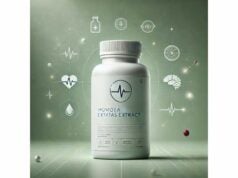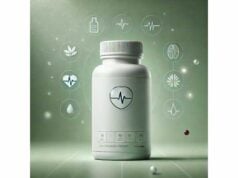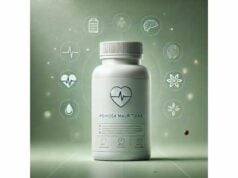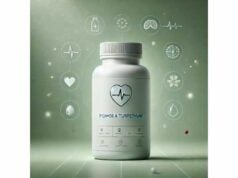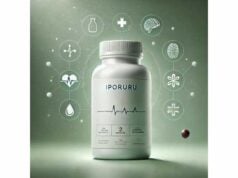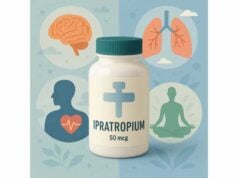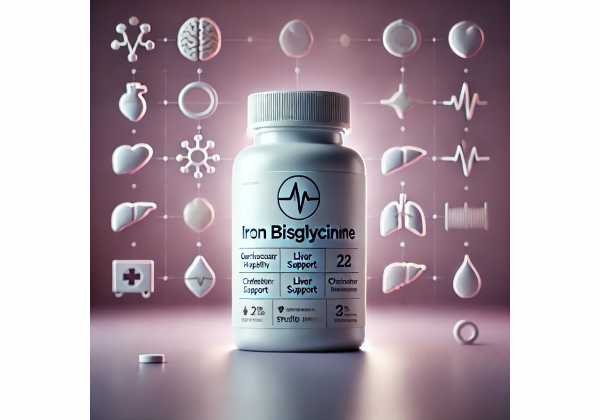
Iron bisglycinate is a chelated form of iron bound to two glycine molecules. Many people choose it because it’s effective at restoring iron stores while being gentler on the stomach than common salts like ferrous sulfate. You’ll see it on labels as “ferrous bisglycinate chelate,” sometimes branded (for example, as Ferrochel), and it typically provides about 20% elemental iron by weight. For fatigue from iron deficiency, heavy menstrual bleeding, pregnancy, or athletic training, this form can help raise hemoglobin and ferritin with fewer interruptions from nausea or constipation. Success still depends on the right dose, timing, and avoiding interactions that block absorption. Below, you’ll find what it is, who benefits most, how to take it, realistic timelines for feeling better, how to pick a product, safety red flags, and what the clinical evidence actually shows—presented in clear steps you can use today.
Key Insights
- Helps raise hemoglobin and ferritin with fewer gastrointestinal side effects than several iron salts.
- Absorption improves with alternate-day or once-daily dosing for many adults.
- Typical maintenance intake is 18–30 mg elemental iron/day; deficiency therapy often 28–60 mg elemental iron/day.
- Do not combine with tetracyclines, quinolones, or levothyroxine; separate by 2–4 hours.
- Avoid use unless advised if you have hemochromatosis, unexplained high ferritin, or active infection.
Table of Contents
- What is iron bisglycinate?
- Does it work and for whom?
- How to take it correctly
- Dosage by goal and life stage
- Side effects and interactions
- Evidence at a glance
What is iron bisglycinate?
Iron bisglycinate is a chelate: a single ferrous (Fe²⁺) ion linked to two molecules of the amino acid glycine. This ring-like structure protects iron as it passes through the stomach and small intestine. Compared with inorganic salts such as ferrous sulfate, the chelate is less reactive with food and the gut lining. That’s one reason many users report fewer issues like nausea, cramping, constipation, or metallic taste. In practical terms, a capsule listing “ferrous bisglycinate chelate” usually contains about 20% elemental iron. A 150 mg chelate dose delivers roughly 30 mg elemental iron; always check your label, because brands may vary.
How it works, simply: iron is absorbed mainly in the duodenum and upper jejunum via transporters that respond to body needs. When you’re iron-deficient, your intestinal uptake increases; when replete, it drops. Large consecutive daily doses transiently raise hepcidin (the hormone that blocks iron absorption), so spacing doses—sometimes even using alternate-day schedules—can improve net uptake. Because the chelate is more stable, it may be less inhibited by phytates (from grains/legumes) and some polyphenols (from tea/coffee). That said, large calcium boluses and certain medications still interfere, so spacing remains important.
Beyond hemoglobin: restoring iron improves oxygen transport, supports thyroid enzymes, and helps mitochondrial energy production. This is why correcting deficiency can reduce fatigue, improve exercise tolerance in iron-depleted individuals, and normalize hair shedding linked to low ferritin. Expect a gradual rise in hemoglobin (about 1–2 g/dL every 2–4 weeks when dosing is adequate) and ferritin increases over months. Most people continue therapy for at least 3 months after hemoglobin normalizes to rebuild iron stores.
Key takeaway: iron bisglycinate offers an effective, stomach-friendly way to replete iron—provided you choose a suitable elemental dose and time it wisely around food and medicines.
Does it work and for whom?
Iron bisglycinate has been tested across groups—non-pregnant adults with low ferritin, pregnant women, children with iron-deficiency anemia (IDA), and athletes with heavy training loads. In randomized trials and meta-analyses, bisglycinate often restores hemoglobin and ferritin at least as effectively as ferrous sulfate, sometimes with fewer gastrointestinal complaints. Pediatric data show similar or better hemoglobin gains than sulfate at equivalent elemental doses. In pregnancy, reviews suggest bisglycinate improves iron status with lower rates of nausea and constipation, outcomes that can make the difference between completing or abandoning therapy.
Who benefits most:
- People who stopped iron due to stomach upset, metallic taste, or constipation.
- Those needing sustained therapy (e.g., heavy menstrual bleeding, peripartum needs), where tolerability drives adherence.
- Individuals with low ferritin (e.g., <30 µg/L) and fatigue despite “normal” hemoglobin.
- Athletes with heavy sweat losses, hemolysis from foot-strike sports, or low-iron diets.
- People advised to take prophylactic iron in pregnancy or postpartum.
Who may not need it: if ferritin and hemoglobin are normal and you have no symptoms or risks, routine supplementation isn’t automatically helpful. Focus on dietary iron (heme sources like meat/seafood and non-heme sources with vitamin C).
Realistic timelines: symptom relief can start within 2–4 weeks for fatigue or exertional breathlessness as hemoglobin rises; hair shedding and brittle nails may take 2–3 months as ferritin rebuilds. If your hemoglobin does not increase by ~1 g/dL after 2–4 weeks of correct use, revisit adherence, dosing, or causes of malabsorption/blood loss with your clinician. Some conditions—celiac disease, inflammatory bowel disease, H. pylori, or heavy menstrual bleeding—require addressing the underlying cause and, occasionally, intravenous iron.
Bottom line: yes, it works—particularly when the right person takes the right elemental dose on the right schedule and continues long enough to rebuild stores.
How to take it correctly
Your goals are twofold: maximize absorption and minimize side effects. Use this step-by-step plan.
- Choose by elemental iron, not total weight
Look for “elemental iron” on the Supplement Facts panel. Many iron bisglycinate products provide 18–30 mg elemental iron per capsule; deficiency treatment often uses 28–60 mg/day. If a brand only lists milligrams of “ferrous bisglycinate chelate,” multiply by ~0.20 to estimate elemental iron. - Pick a schedule that fits your biology
Because hepcidin spikes after an iron dose and suppresses absorption for about a day, once-daily or alternate-day dosing can outperform multiple small doses in many adults. If you’re sensitive, start with every other day for one week, then increase to daily as tolerated. Consistency matters more than exact timing. - Time it around food and medicines
- Best: on an empty stomach or with vitamin C-rich food (citrus, berries, bell peppers).
- Acceptable: with a small snack if nausea occurs; avoid high-calcium foods at the same time.
- Separate by 2–4 hours from: calcium supplements or antacids; tea/coffee; high-fiber binders; and medications that chelate with iron (tetracyclines, quinolones). Keep at least 4 hours from levothyroxine.
- If you take a prenatal or multivitamin, stagger the iron from calcium/magnesium.
- Titrate to comfort
If constipation or nausea appear, reduce the dose (e.g., from 30 mg to 15–18 mg elemental) or switch to alternate-day dosing, then build back up. Many people find bisglycinate tolerable without stool softeners, but adding fluids, fiber, and movement helps. - Track progress
- Hemoglobin: recheck in 2–4 weeks if you’re treating IDA.
- Ferritin: recheck at 6–12 weeks; continue therapy for ~3 months after hemoglobin normalizes to replenish stores (often targeting ferritin ≥50 µg/L for symptom relief, per clinician guidance).
- Symptoms: log energy, exercise tolerance, hair shedding, and sleep quality weekly.
- Know when to escalate
If absorption remains poor or you have ongoing blood loss, ask about intravenous iron. It bypasses the gut, rapidly corrects anemia, and avoids GI side effects when oral therapy fails or is contraindicated.
Dosage by goal and life stage
The right dose depends on whether you’re preventing deficiency, correcting it, or rebuilding stores after anemia. All doses below refer to elemental iron from iron bisglycinate unless noted.
General prevention and low ferritin without anemia
- Typical: 18–30 mg/day.
- Sensitive stomach or low body weight: 15–18 mg/day or 30 mg every other day.
- Athletes with low ferritin: 18–30 mg/day, reassess after 8–12 weeks.
Treatment of iron-deficiency anemia (non-pregnant adults)
- Common outpatient range: 28–60 mg/day, once daily or on alternate days.
- Consider alternate-day if prior intolerance or poor hemoglobin response to daily dosing.
- Expect a ~1–2 g/dL hemoglobin rise in 2–4 weeks with adequate dosing and adherence.
Pregnancy and postpartum (use clinician guidance)
- Prevention in pregnancy: many programs recommend 30–60 mg/day of elemental iron (often as ferrous salts), which can be met with iron bisglycinate if approved by your clinician.
- Treatment of diagnosed anemia in pregnancy: higher daily intakes may be used short-term (for example, 60–120 mg/day of elemental iron in divided or once-daily schedules, depending on tolerance and clinical targets).
- Postpartum: 30–60 mg/day for 6–12 weeks is common when ferritin is low or anemia persists after delivery.
Adolescents and heavy menstrual bleeding
- Prevention: 18–30 mg/day.
- Treatment of ID/IDA: 28–60 mg/day with monitoring and attention to menstrual management.
Vegetarian or low-heme diets
- Prevention: 18–30 mg/day, prioritizing vitamin C-rich meals and heme iron when possible.
- Monitor ferritin periodically, especially if symptoms appear.
Pediatrics
- Always individualized by a pediatric clinician. Trials have used 3–6 mg/kg/day elemental iron for IDA; tolerability with bisglycinate is generally favorable.
Chronic conditions
- For malabsorption, inflammatory bowel disease, bariatric surgery, or chronic kidney disease, oral iron may be insufficient; intravenous iron is often preferred in consultation with specialists.
Duration
- After hemoglobin normalizes, continue iron for ~3 months to rebuild ferritin. Many people then step down to 18–30 mg/day (or a diet-only approach) to maintain levels.
Side effects and interactions
Iron bisglycinate is chosen for a lower rate of gastrointestinal complaints compared with some salts, but side effects can still occur—particularly at higher elemental doses or in sensitive users.
Common, usually mild
- Nausea, stomach upset, or epigastric discomfort.
- Constipation or, less often, loose stools.
- Dark stools (benign).
Less common
- Metallic taste, heartburn, abdominal cramping.
- Headache or dizziness with rapid dose escalation.
Strategies to reduce issues
- Take on an empty stomach if tolerated; otherwise, with a light snack.
- Consider alternate-day dosing; this can improve net absorption while reducing symptoms.
- Hydrate well; add dietary fiber or a gentle stool softener if constipation persists.
Medication and nutrient interactions
- Do not co-administer with tetracycline or quinolone antibiotics; separate by at least 2–4 hours.
- Separate from levothyroxine by at least 4 hours.
- Magnesium, calcium, zinc, and aluminum-containing antacids compete with iron; separate by 2–4 hours.
- Tea/coffee and high-phytate foods blunt absorption; avoid within 1–2 hours of your dose.
- Vitamin C foods can help absorption; large calcium boluses can hinder it.
When to avoid or use only with medical supervision
- Hemochromatosis or other iron-overload disorders.
- Chronically high ferritin of unclear cause.
- Recurrent transfusions.
- Active systemic infections (iron may promote pathogen growth).
- Inflammatory bowel disease during flares—consider intravenous iron.
- Children: dosing and monitoring must be clinician-directed; iron overdose is dangerous.
Warning signs—seek care promptly
- Chest pain, black tarry stools, severe abdominal pain, or signs of an allergic reaction.
- No hemoglobin rise after 2–4 weeks of correct therapy (requires evaluation).
- Persistent or worsening fatigue, breathlessness, or palpitations despite adherence.
Evidence at a glance
- Absorption dynamics: Large consecutive daily doses transiently raise hepcidin, reducing next-day absorption; once-daily or alternate-day schedules can yield better net uptake in iron-deficient adults.
- Efficacy and tolerability: Randomized and controlled studies indicate ferrous bisglycinate raises hemoglobin and ferritin effectively, often with fewer gastrointestinal events than ferrous sulfate. Pediatric trials show strong efficacy at weight-based doses and good adherence.
- Pregnancy: Systematic reviews and program guidelines support daily iron in pregnancy to prevent maternal anemia and adverse birth outcomes; trials with bisglycinate suggest comparable or improved tolerability, which is crucial for adherence during nausea-prone trimesters.
- Practical expectations: With adequate dosing, hemoglobin usually increases by ~1–2 g/dL in 2–4 weeks; ferritin takes longer to rebuild. Continuing therapy 3 months past hemoglobin normalization helps restore iron stores and reduce recurrence.
- When oral iron fails: Consider intravenous formulations for intolerance, malabsorption, or ongoing blood loss; these correct anemia more rapidly and bypass the gastrointestinal tract.
References
- Oral iron supplementation: new formulations, old questions 2024 (Review)
- Daily iron and folic acid supplementation during pregnancy 2025 (Guideline summary)
- Iron absorption from supplements is greater with alternate day than with consecutive day dosing in iron-deficient anemic women 2017 (RCT physiology)
- The effects of oral ferrous bisglycinate supplementation on iron status and gastrointestinal adverse events in pregnant women: A systematic review and meta-analysis 2023 (Systematic Review)
- Tolerability of iron: a comparison of bis-glycino iron II and ferrous sulfate 1991 (Randomized, cross-over)
Disclaimer
This guide is educational and does not replace personalized medical advice. Iron supplements can mask or worsen underlying conditions and interact with common medications. Always confirm your diagnosis, select dosing, and arrange follow-up testing with a qualified clinician—especially in pregnancy, chronic disease, or for children. If you experience severe symptoms or signs of overdose, seek urgent care.
If you found this useful, consider sharing it on Facebook, X (formerly Twitter), or your favorite platform, and follow us for more evidence-based health guides. Your support helps us keep producing high-quality content.

